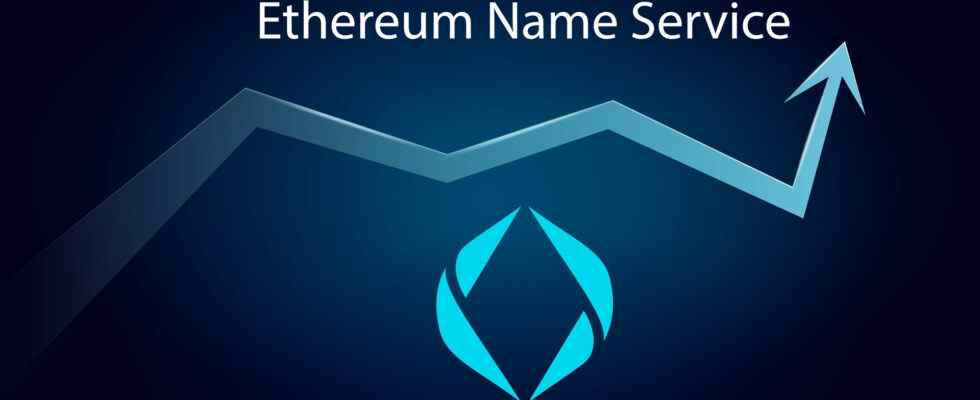Ethereum (ETH) founder Vitalik Buterin has presented new proposals to change the long-term ownership mechanism of the Ethereum Name Services (ENS) domain service.
In an article shared by Vitalik Buterin recently, details for constructive innovations and fee solutions in the long-term ownership mechanism of the Etherem Name Services (ENS) domain ownership system were included. 2017 While the ENS domain name service, which has been in service since 1999, has gained popularity and continues to break records in the number of new accounts, the founder Buterin pointed out the wrong points in the long-term ownership system.
ENS domains are very cheap today. It costs just $5 a year to register and maintain a five-letter domain name. Besides, there are almost no 5-letter domain names left. By selling these domains so cheaply, ENS DAO is generating far less revenue than its potential, which limits its ability to take action to improve the ecosystem.
At this point, Buterin appears to be looking for new solutions for the ongoing long-term ownership of domain names. These solution suggestions increase the security of the system, DAO (Decentralized autonomous organization) is looking for ways to make more profits and to ensure that the system reaches the people who will use it most actively.
Problem 1: Can ownership justice be achieved over property rights?
Buterin points to 5-letter and high-value names as an example. A user “tesla” domain name for very cheap prices for 100 years It is argued that its holding will not have good results both for the sustainability of the network and for its fairness. And at this point, he states that the recurring annual fees should work with a different algorithm:
Suppose domains are held by someone who is irrationally stubborn and unwilling to give up their domains. The recurring fees in ENS and traditional DNS are a healthy mitigation against the worst excesses of the pay-once-forever model; at least recurring fees mean no one can accidentally lock a space forever through forgetfulness or carelessness.
Problem 2: Speculators do not actually create efficient markets
One of the first ideas discussed for the ENS annual taxation system Harberger taxes is known to be. Although the Herberger system, a solution based on market demand, may seem logical at first glance, it is not a sustainable idea according to the founder Buterin. Here’s how the system works: if the registrant lists his embezzled address for sale in the market for 10 Ethereum, at the listing price regardless of incoming offers or whether it’s sold. 0.5%A tax cut is made. This will force domain name owners who refuse to sell and lose money every year. However, the point where this system is blocked can be considered as the possibility of abuse by malicious users.
For example, coinbase.ethmay not be the real owner of Coinbase, and a fraudulent fundraiser allegedly managed by the phony domain owner Coinbase; or ICO It could be a scammer that creates a scam and asks people to send their money to that address. For these reasons, the Harberger tax system is shelved and alternative searches begin.
Alternative solution 1: On-demand recurring pricing
The first proposal to the community by Vitalik Buterin is called the demand-driven recurring pricing system. According to this system, an annual taxation is put forward on the highest bid received to the ENS address in the sale. Based on real market demand, this arrangement is based on a fixed rate reduction of the tax fee in the absence of an offer.
Anyone can bid on a given domain name, and if the offer remains valid for a sufficient period of time, for example 4 weeks, the value of the domain will be taxed at that price. Although this rate is not clear, the taxation can be adjusted as 0.05% of the highest bid value. Here the registrant will have two options after receiving the offer: he can accept the offer or turn it down at the risk of starting to pay a higher price.
Alternative solution 2: Time-based property guarantee
The second solution in question allows the user to protect their domain name with changing taxation over long-term time periods. This system, which provides an unconditional guarantee at one point, allows the user to complete this transaction by paying a money close to a fixed rate.
For example, if 7 years then if you get a $5 offer, the annual fee increases to $5, but after 7 years if you get a $10 offer, the annual fee only increases to $7. If no bid maximizing the fee is placed for a certain period of time (for example, a full year), the tax rate will be reset. Keep in mind that these amounts are theoretical maximums paid to guarantee the retention of a domain name for that year. In practice, owners of almost all domains are not offered very high sums on almost any domain name. pay much less than the maximum they will do.
Demand from external offers clearly provides some signals about how valuable a domain is (and therefore the extent to which an owner excludes others by maintaining control over the domain). So, whatever your views on what level of fees should be charged to maintain a domain name, I would argue that you should find some parameter options for on-demand fees attractive.
While these recommendations of Vitalik continue to be discussed by the community, it has not yet been decided which one will be implemented or revised and accepted in the future. But it seems that it is only a matter of time before a revolutionary innovation in the ENS annual tax payment system comes into play.
